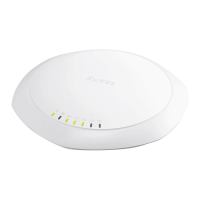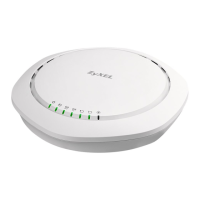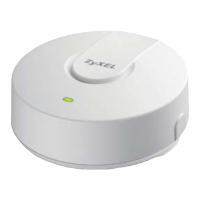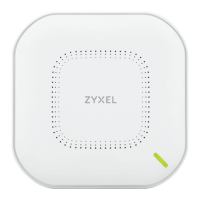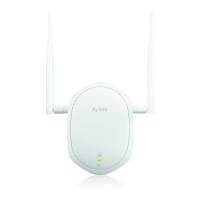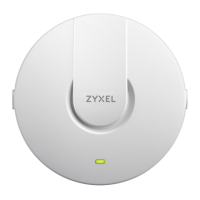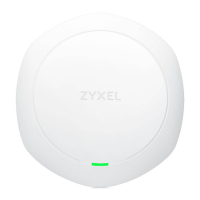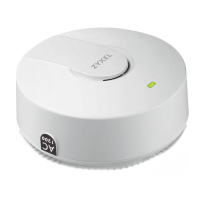
Do you have a question about the ZyXEL Communications NWA1123-ACv2 and is the answer not in the manual?
| 2.4 GHz | Yes |
|---|---|
| MIMO type | Multi User MIMO |
| Modulation | 16-QAM, 64-QAM, 256-QAM, BPSK, CCK, DBPSK, DQPSK, QPSK |
| Networking standards | IEEE 802.11a, IEEE 802.11ac, IEEE 802.11b, IEEE 802.11g, IEEE 802.11n, IEEE 802.3, IEEE 802.3af, IEEE 802.3az, IEEE 802.3u |
| Receiver sensitivity | 2.4 GHz: - 802.11b/g, -99 dBm - 802.11n/20 MHz, -93 dBm - 802.11n/40 MHz, -88 dBm 5 GHz: - 802.11a, -95 dBm - 802.11ac/n/20 MHz, -94 dBm - 802.11ac/n/40 MHz, -92 dBm - 802.11ac/80 MHz, -89 dBm |
| Ethernet LAN data rates | 10, 100, 1000 Mbit/s |
| Maximum data transfer rate | 1200 Mbit/s |
| Internal | No |
| Placement | Ceiling, Wall |
| Certification | FCC Part 15C, FCC Part 15E; ETSI EN 300 328, EN 301 893; LP0002, EN 60601-1-2, FCC Part 15B, EN 301 489-1; EN 301 489-17, EN55022, EN55024, EN61000-3-2/-3, BSMI CNS13438, EN 60950-1, IEC 60950-1; BSMI CNS14336-1 |
| Product color | White |
| USB 2.0 ports quantity | 0 |
| Ethernet LAN (RJ-45) ports | 1 |
| Security algorithms | EAP-AKA, EAP-FAST, EAP-PEAP, EAP-SIM, EAP-TLS, EAP-TTLS, WEP, WPA, WPA2-Enterprise, WPA2-PSK |
| Number of SSID supported | 16 |
| Antenna features | Integrated antenna |
| Antennas quantity | 2 |
| Input current | 0.3 A |
| Output current | 1 A |
| Output voltage | 12 V |
| AC input voltage | 100 - 240 V |
| AC input frequency | 50 - 60 Hz |
| Power consumption (typical) | 9 W |
| Storage temperature (T-T) | -30 - 70 °C |
| Operating temperature (T-T) | 0 - 50 °C |
| Operating relative humidity (H-H) | 10 - 90 % |
| Package depth | 209 mm |
| Package width | 278 mm |
| Package height | 72 mm |
| Package weight | 700 g |
| Width | 130 mm |
|---|---|
| Height | 54.7 mm |
| Weight | 300 g |
Details the hardware components of the NWA5301-NJ model.
Describes the function and status of LEDs on various NWA/WAC models.
Explains the procedures for starting and stopping the NWA/WAC device.
Provides steps to access the NWA/WAC's web interface.
Explains how to navigate the web configurator interface.
Guides on how to access the setup wizard.
Explains how to use the setup wizard for initial configuration.
Guides on setting up IP addresses and network configurations.
Describes how to configure radio transmitter settings.
Explains how to enable, disable, or edit SSID profiles.
Describes the main dashboard screen displaying device and system status.
Displays general Ethernet interface information and packet statistics.
Displays statistics for the NWA/WAC's wireless radio transmitters.
Displays statistics for associated stations or wireless clients.
Shows WDS traffic statistics between NWA/WAC and root AP or repeaters.
Displays information about suspected rogue APs.
Allows viewing and managing log messages and alerts.
Discusses standalone vs. CAPWAP managed AP modes.
Guides on configuring the NWA/WAC's LAN IP address.
Explains how to configure VLAN settings for the NWA/WAC.
Details how to configure AP Controller Discovery settings.
Guides on managing general wireless settings for the NWA/WAC.
Allows assigning APs to rogue or friendly lists.
Configures wireless traffic load balancing between APs.
Guides on configuring dynamic radio channel selection.
Configures beacon ID parameters for advertising packets.
Details how to edit beacon ID settings.
Provides a summary of all user accounts.
Allows creation or editing of user accounts.
Controls default settings, login, and lockout settings for users.
Allows creating radio profiles for the NWA/WAC's transmitters.
Configures SSID, security, and MAC filter profiles for APs.
Explains how to create or edit an SSID profile.
Manages wireless security configurations for SSIDs.
Manages security configurations based on MAC addresses.
Prevents wireless clients from communicating with each other.
Allows creating monitor mode configurations for APs.
Allows managing and creating WDS profiles for APs.
Guides on verifying a certificate's fingerprint before import.
Provides a summary list of NWA/WAC certificates and requests.
Guides on creating self-signed certificates or certification requests.
Explains how to import certificates into the NWA/WAC.
Displays a summary list of trusted certificates.
Explains how to save trusted certificates to the NWA/WAC.
Explains how to set the system time manually or via a time server.
Details how to use HTTPS for secure Web Configurator sessions.
Guides on specifying HTTP or HTTPS settings.
Guides on enrolling and importing SSL client certificates.
Explains how to use SSH for secure command line interface access.
Guides on configuring Secure Shell settings.
Discusses SNMP for network device management and monitoring.
Guides on starting/stopping data collection and viewing statistics.
Controls log messages and alerts, and email/syslog settings.
Guides on storing, running, and naming configuration files.
Guides on checking firmware version and uploading firmware.
Demonstrates uploading firmware via FTP.
Explains using shell scripts for specifying NWA/WAC commands.
Provides an easy way to generate a configuration and diagnostic file.
Allows control over LED behavior after the device is ready.
Enables identification of the WAC's location among network devices.
Guides on adjusting antenna orientation using the web configurator.
Allows remote users to restart the device.
Provides steps to shut down the NWA/WAC device.
Troubleshoots issues related to power, connections, and LED behavior.
Addresses problems with accessing the NWA/WAC or logging in.
Troubleshoots issues related to internet connectivity.
Provides steps for when internet access is unavailable.
Offers solutions for slow or intermittent internet connections.
Troubleshoots issues with wireless client connectivity.
Steps for when WLAN clients cannot access the NWA/WAC or network.
Explains how to reset the device to factory default settings.
Guides on importing and managing certificates in Internet Explorer.
Guides on importing and managing certificates in Firefox.
Explains the 128-bit IPv6 address format and abbreviations.
Explains automatic IP address generation without a DHCP server.
